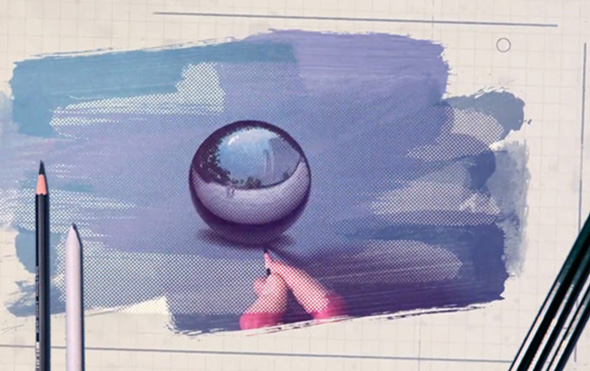
Today, we are going to focus on a skill that can truly elevate your artwork and bring depth and dimension to your creations—the art of realistic shading!
Whether you’re a beginner or looking to refine your technique, mastering shading can make a significant difference in how your art is perceived. Let’s explore some valuable tips and techniques to help you on this journey.
Before we start, we must highlight our course by Leonardo Perezneito: Realistic Shading and Drawing. It’s an incredible look into the world of shading, with Leonardo, the master shader, teaching you step-by-step. Another great reference is our chapter on Mastering Light and Shading by Aveline Stokart in our Illustrator’s Guidebook Vol.2!
To create realistic shading, a fundamental understanding of light and shadow is crucial. Light source direction, intensity, and the form of the object all play key roles. Begin by studying how light interacts with objects in real life. Notice how shadows form, where highlights appear, and how different surfaces reflect or absorb light. This observation forms the basis of your shading technique.

Before diving into shading complex subjects, practice shading basic shapes like spheres, cubes, and cylinders. This allows you to focus purely on light and shadow without the distraction of intricate details. Experiment with placing light sources in different positions relative to the object and observe how this changes the shadows.

Create value scales from light to dark using pencils or digital tools. This exercise helps you understand the range of tones you can achieve and how to smoothly transition between them. Practice blending techniques such as hatching, cross-hatching, stippling, and blending with tortillons or brushes to achieve different textures and effects.

Look at works of art known for their realistic shading. Hint: check out some of Leonardo’s work on his Instagram and in our course! Study the techniques used by these artists renowned for their hyper-realistic drawings. Analyze how they capture light and shadow to create depth and drama in their artworks.

Train your eye to observe shadows and highlights in everyday objects. Take time to sketch and shade simple objects around you—a piece of fruit, a household item, or even your own hand. Pay attention to subtle changes in light and how they affect the form and texture of the object.

Remember, mastering realistic shading takes time and practice. Be patient with yourself as you develop this skill. Keep a sketchbook dedicated to shading exercises and revisit them regularly to track your progress. Each drawing is an opportunity to learn and improve.

Incorporating realistic shading into your artwork can transform it from flat and two-dimensional to vibrant and lifelike. By understanding light and shadow, practicing diligently, and experimenting with different techniques and materials, you can hone your skills and create compelling, realistic artworks that captivate viewers.
If you enjoyed these tips and want to dive even deeper into the world of shading, check out our course by Leonardo Perezneito: Realistic Shading and Drawing. Leonardo is a master shader, and this course will surely bring your shading skills to the next level. Also, be sure to check out our chapter on Mastering Light and Shading by Aveline Stokart in our Illustrator’s Guidebook Vol.2!
We hope these tips inspire you to explore and develop your shading techniques. Remember, every stroke and every shadow adds to the story your artwork tells.
Happy shading!
Emilie Apel is a French/American multidisciplinary artist based in the U.S. She travels frequently to Nepal and loves exploring the fusion between her meditation practice and art. Emile's favorite medium is watercolors.